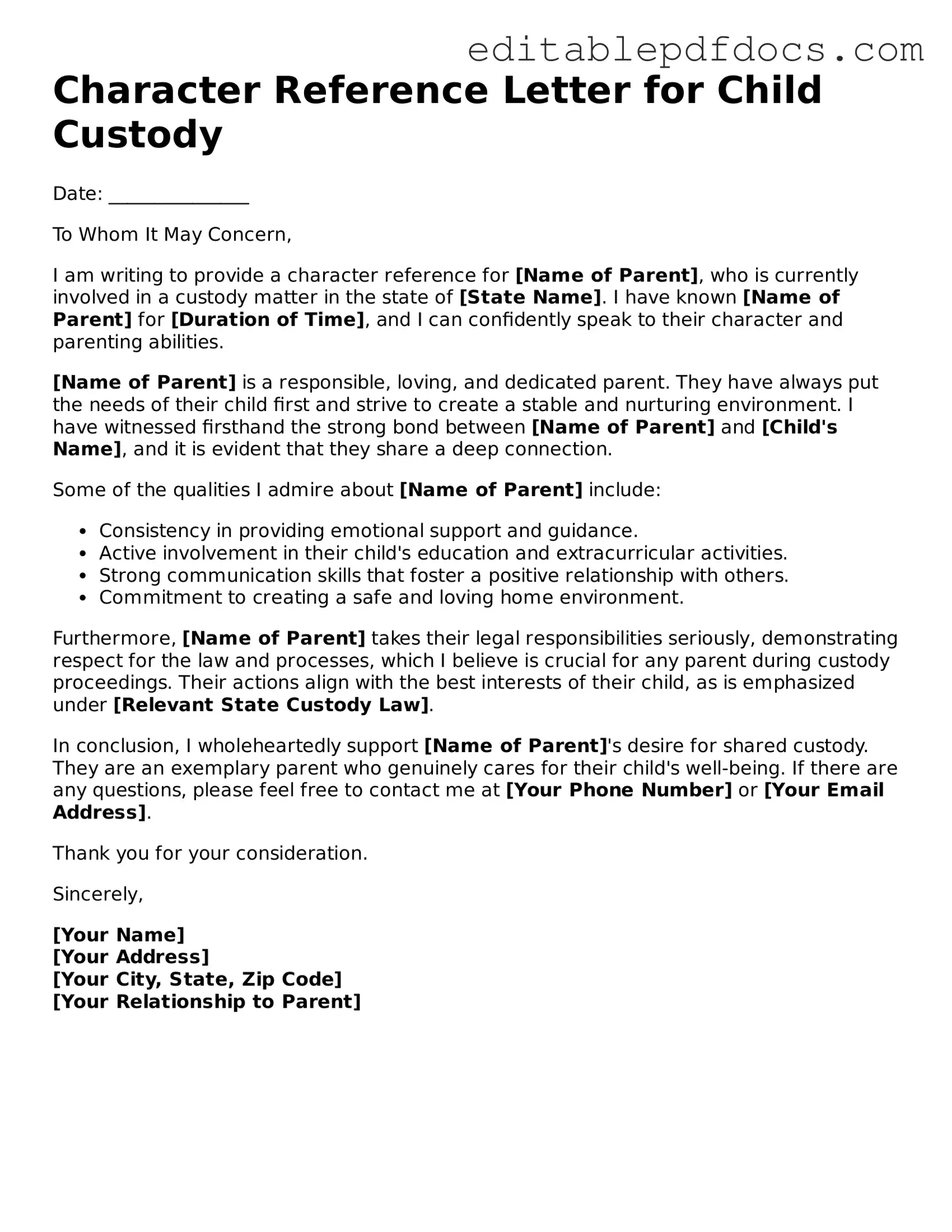When navigating the complexities of child custody arrangements, a Character Reference Letter can play a pivotal role in demonstrating a parent's suitability and commitment to their child's well-being. This letter serves as a personal testament from friends, family, or colleagues who can provide insight into a parent's character, parenting abilities, and overall lifestyle. It is not merely a formality; rather, it can significantly influence a court's decision regarding custody arrangements. The letter typically highlights the parent’s strengths, values, and the positive environment they create for their child. Additionally, it may include specific examples of interactions with the child, showcasing the bond and support the parent provides. Crafting a compelling Character Reference Letter requires careful consideration of the language used and the details included, as the ultimate goal is to present a truthful and favorable depiction of the parent in question. Understanding the nuances of this document can be crucial for anyone involved in custody proceedings, ensuring that it resonates with the court and reflects the best interests of the child.
